Oxford
On Saturday, we spent an (unfortunately) very rainy day touring England's other great university city, Oxford.
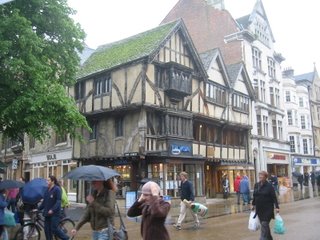
Even in the rain, Oxford was teeming with people. The need to be out and about in the bustle of city life clearly outweighs the more rational imperative for shelter! For us, this was our only chance to visit 'the other place,' as Cantabrigians refer to Oxford. Here is a wonderful old building in the city center.
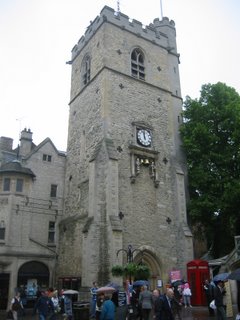
Carfax Tower, pictured here, is the 14th century tower of St. Martin's Church. We arrived just in time to hear the chime toll noon.
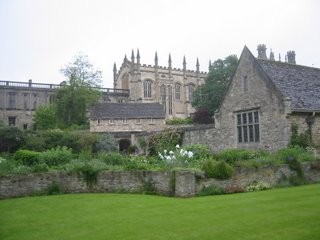
Christ Church College is recently famous as the site of Hogwart's Dining Hall in the Harry Potter films. Here you can see a view of the Christ Church Great Hall in the background of the college grounds.
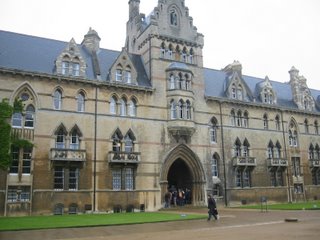
This is the main gate to Christ Church College, occupying the site of a religious house founded in 700 AD by St. Fridewide, patroness of the city.
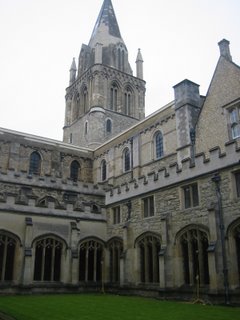
This is Tom Tower, so called since it houses Great Tom, the large bell moved here from Osney Abbey after the Reformation. This view is from the cloisters. The tower was designed by the famous Christopher Wren, and the bell tolls 101 times at 9:05 pm daily, supposedly to call back the 101 scholars to the college grounds before the gates are locked for the night.
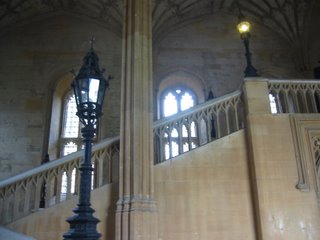
The Great Hall was closed to visitors on the day we arrived, but we were able to photograph the grand staircase leading to the Hall. (This is where Professor McGonigle meets the first years in HP and the Sorcerer's Stone.)
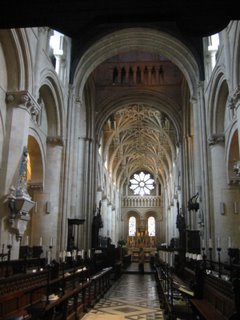
The Cathedral was also beautiful and dates to the late 12th century. This is a picture of the nave.
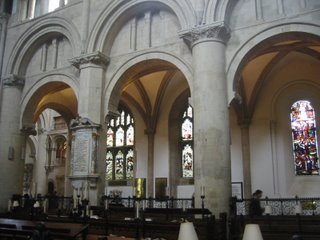
The arches show the Norman (and Early English) style of the Cathedral.
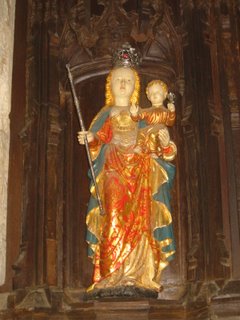
This beautiful Madonna and Child statue was at the entrance to the Lady Chapel.
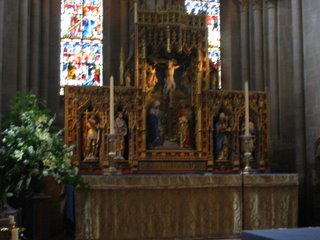
The reredos here, at the High Altar, was also beautiful.
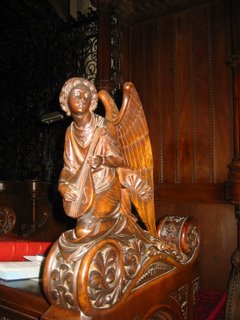
The choir stalls were adorned with wooden details, like the angel pictured here.
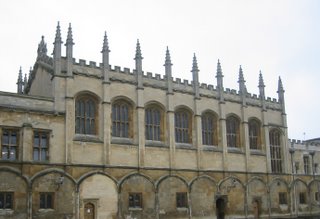
This, dear Muggles, was our best view of the Great Hall.
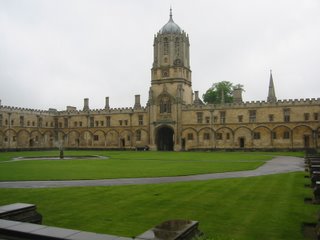
Here you can see both the inner courtyard as well as Tom Tower.
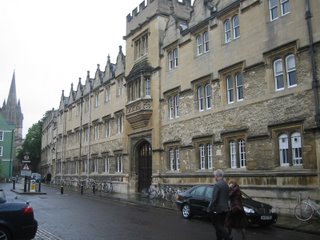
Oxford University consists of 39 colleges. The one pictured here, is Merton College, founded in 1264. This was the first college here where students could live and be tutored. J.R.R. Tolkein was Professor of English Language and Literature here (1945-1968).

This is the main gate to All Souls College. It was founded in 1438 by Archbishop Chichele of Canterbury, as a memorial to those who died in the Hundred Hears' War.
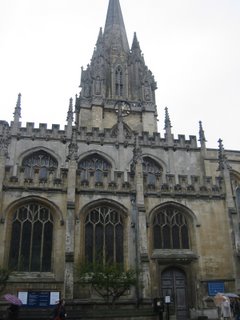
Here is the University Church of St. Mary the Virgin. It was built in the early 14th century on the site of a former St. Mary's Church, and incorporates its 13th century tower.
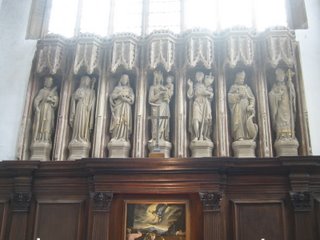
These statues stand above the altar. They are (left to right) Catherine of Alexandria, Frideswide of Oxford, Mary Magdalene, the Virgin Mary, John the Baptist, Hugh of Lincoln, and Edmund of Abingdon (Oxford-educated 13th c. Archbishop of Canterbury).
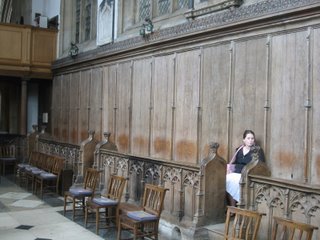
Danny loved these old and battered altar stalls.
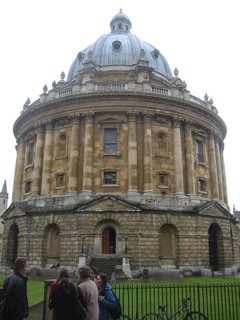
Radcliffe Camera, the building pictured here, was completed in 1749. It was built to house a library devoted to the sciences, but is now a private reading room for the Bodleian Library.
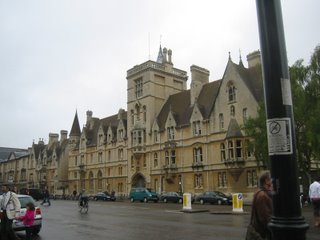
Balliol College was founded from a penance served by John of Balliol when he assaulted the Bishop of Durham. John was publicly whipped and commanded to perform a charitable act. So in 1266 he created an Oxford hostel for 16 poor scholars that later became Balliol College.
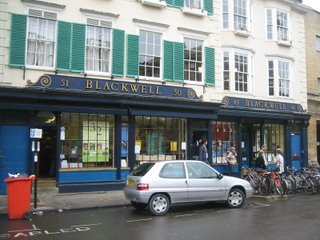
Blackwell's Bookshop opened in 1879. It is one of the world's largest and most famous bookshops. The Norrington Room (in the basement) is the biggest single room of books in England.
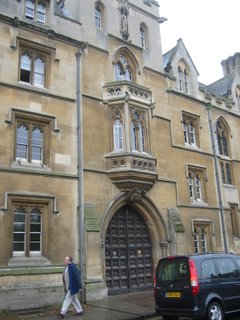
Exeter College was founded in 1314 by the Bishop of Exeter. (Here is where Tolkein studied as a young man.)

This gorgeous building is the Sheldonian Theatre which opened in 1669. It was the first large-scale work by Christopher Wren. It is now used for Oxford degree ceremonies.

We had to eat lunch at The Eagle and Child, the same pub where Tolkein and C.S. Lewis frequented during the 1940s and 1950s, when The Lord of the Rings and the Narnia books were written.
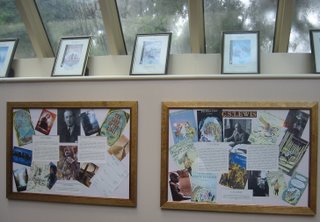
These two framed pieces contain various memorabilia from both Lewis and Tolkien. They were part of a group of academic and literary men called the 'Inklings.'
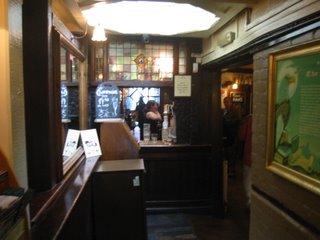
You can tell by this picture how quaint The Eagle and Child Pub is.
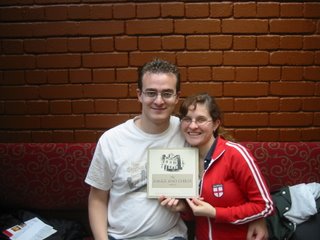
Sara and Keith did the touristy thing: having their picture taken with the menu in the pub.

Here is a letter written by the 'Inklings' to the owner of the pub (Lewis' contribution is at the top of the page and Tolkien's at the very bottom).
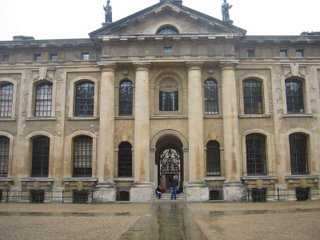
After lunch we went to the Bodleian Library. Here is the back of the Sheldonian as seen from the courtyard of the Bodleian Library.
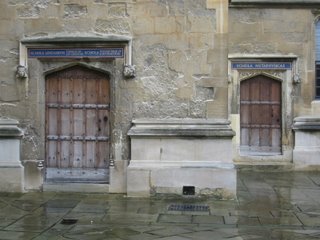
The Bodleian is the main research library for the university and another of England's copyright libraries. It houses over 9 million items! All the tour tickets were sold out, so sadly, we weren't able to enter the main library. Here are two of the dozen or so doors that open onto the impressive inner courtyard. Above each door are names of the ancient schools at the university. The door on the left advertises the School of Languages (Hebrew and Greek) and the School of Geometry and Arithmetic, while the one on the right leads to the School of Metaphysics.
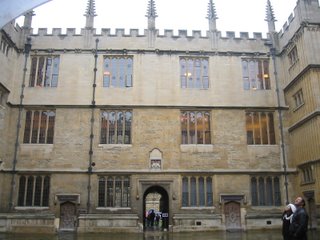
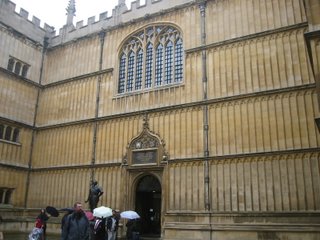
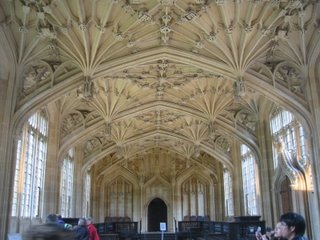
The beautiful fan-vaulted ceiling in the hall at the Divinity School was started in about 1420 but not completed until the 1480s.

We toured the collection at the Ashmolean Museum.
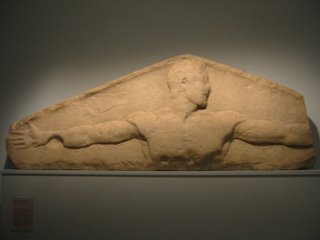
This 2nd c. AD Greco-Roman frieze is called 'Metrological Relief.' It shows various measures of length, and may have stood above a door at a market where officials controlled the weights and measures for commerce.
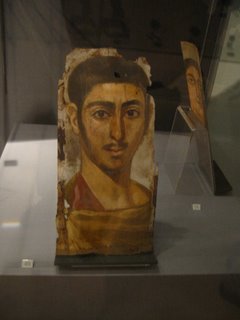
This stunning 'Mummy Portrait' comes from Egypt (3rd c. AD).
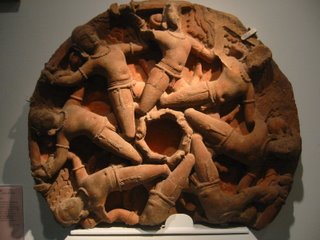
Just look at how elaborate this ancient Indian 'Ceiling Boss' is.
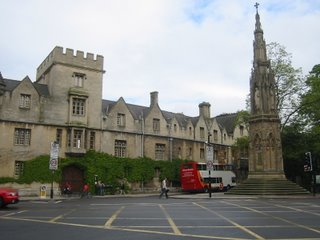
Here is St. John's College. Sir Thomas White, a tailor, bought a 15th century college and founded it in the name of John the Baptist, the patron saint of tailors.
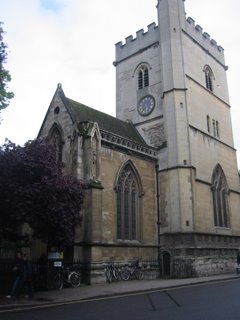
This picture is of St. Mary Magdalen Church.
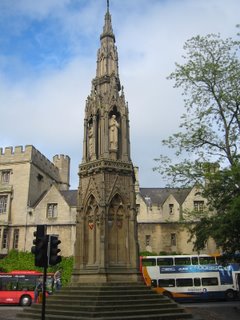
This Martyrs' Memorial was erected in 1841 to commemmorate Protestant martyrs who died in the 16th century.

1 Comments:
No photos of Blackfriars?! And the Oxford Oratory? Or are they still to come?
Post a Comment
<< Home